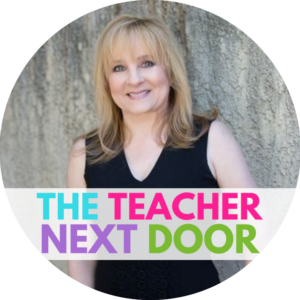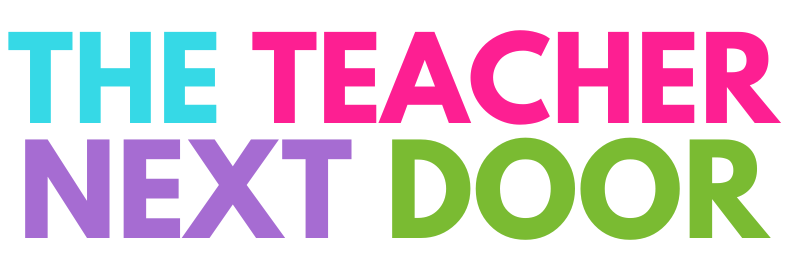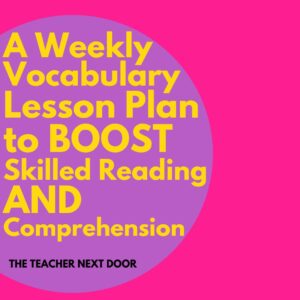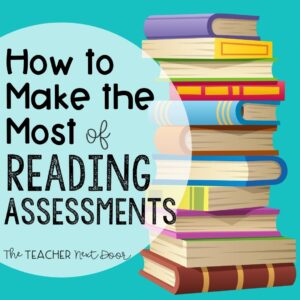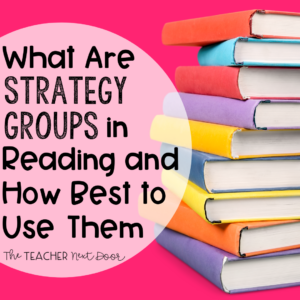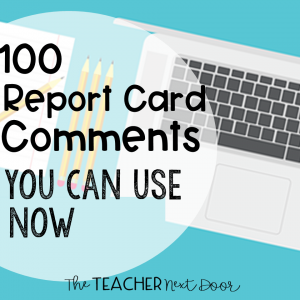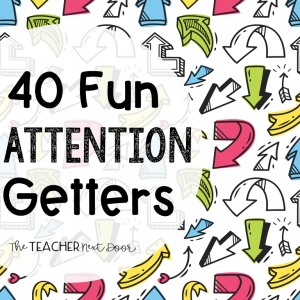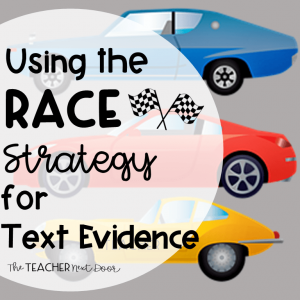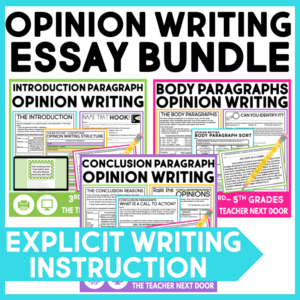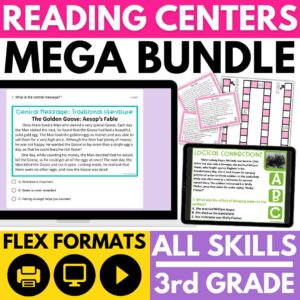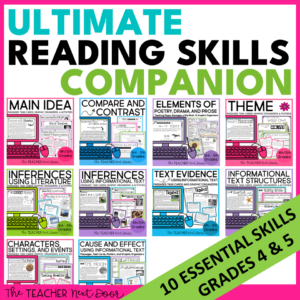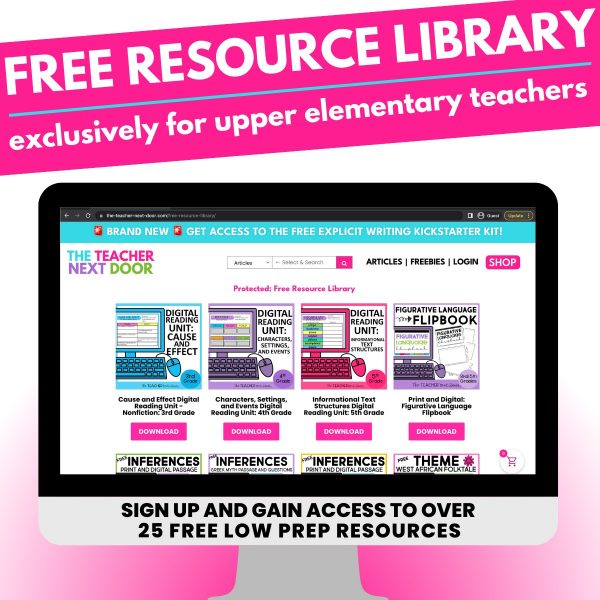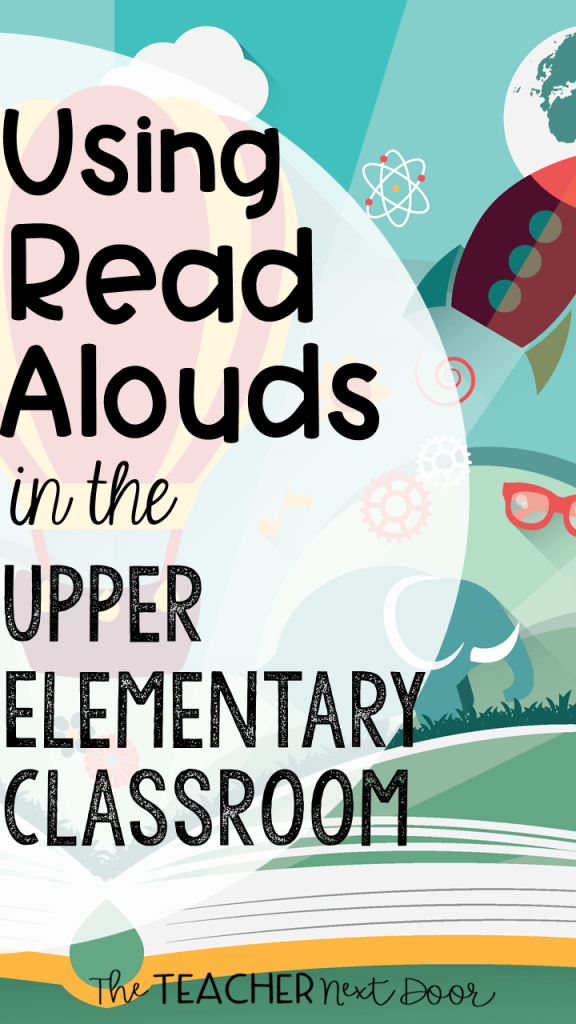
Read alouds are definitely not just for little kids! I have always loved doing read alouds in upper elementary and they’re an important part of the reading program.
One of the great things about read alouds is that they’re not only fun, but are so beneficial for students!
Read Aloud Benefits:
- Models good reading (rhythm, phrasing, expression…)
- Exposes students to a variety of genres and authors
- Boosts vocabulary
- Develops background knowledge
- Builds literary knowledge
- Strengthens listening skills
- Can be used to model thinking processes (Think Alouds)
- Helps teach specific reading skills
- Helps build the classroom climate
- Motivates students to read
There are lots of different types of books that can be used for read alouds in upper elementary.
The one requirement that I have for a read aloud (no matter what type of book it is), is that it’s engaging for students.
Here are the three categories of books I use for read alouds:
1. Picture Books
Picture books are an incredible tool to use in upper elementary classrooms. Kids at this age love the picture based format, the short stories, and the comfortableness of listening to a story for enjoyment.
Don’t let picture books fool you though. Many picture books have a surprising amount of text complexity as well as vocabulary. They can stretch students as readers!
Also, carefully selected picture books can be used as mentor texts to teach EVERY reading standard. They are one of my teaching go-to’s!
Picture books actually work well to teach any subject really, from writing, to science, social studies, math and social-emotional learning.
2. Chapter Books
Every day after lunch, I have always read a chapter or two from a chapter book, no matter what the age of my students. It’s so satisfying to see students really get into the books I read aloud.
During our read aloud time, one of my favorite things to hear is when kids beg me to read just one more chapter. That’s when I know that they’re hooked!
Since I’m always trying to reach my struggling and reluctant readers, one strategy I like to use when choosing my read alouds is to read the first chapter book in a series. This is such a great way to help kids find quality books they WANT to read!
3. Poetry
Poetry is something I love to include throughout the year. Reading a bit of poetry to upper-grade students is a great way for them to hear the beauty of the language, and its rhythm too. To find out more about why I think poetry is so important, click here.
Read Aloud Tips:
1. For Picture Books:
I find it best to have the whole class gather in our meeting area. I sit on a chair and students also sit on a few chairs, the futon, or criss-cross on the floor. That way everyone can see the pictures easily, we can have conversations when we need to, and it creates a reading community feeling.
2. For Chapter Books:
I like to sit in front of the class on my director’s chair. Kids sit at desks or tables.
I give each student a drawing notebook at the beginning of the year, (when the spiral notebooks are 10 cents at Target for Back to School time) and I let them draw and doodle if they’d like while I read. We do have an expectations talk about appropriate pictures but it’s never been a real issue, thank goodness.
3. For Poetry:
I like to project the poetry book or handout with a document camera on the SmartBoard. That way kids are able to read along with me. Sometimes too, after the initial read aloud, we split the poem into parts and do choral reading kinds of activities with the poems too.
You may be wondering how I find time to fit in a read aloud every day. I know we’re all so busy and are trying to fit everything into our crowded class schedules. The simple answer to me is that I make the time for read alouds.
Since I have seen the lessons kids can learn from read alouds, the way books help us build a sense of community, and the way they encourage kids to actually enjoy reading, there’s no way I wouldn’t include them in the schedule.
To me, read alouds are an important part of the total reading program. No guilt here!
If you’d like more ideas about using picture books with 3rd – 6th grade readers, you might like to read another post I wrote. Click here if you’d like to read 5 Reasons to Use Mentor Text With Big Kids.
Are you looking for some time-saving resources that hit standards but are kid-approved?
You might like to take a look at some of these:
Digital Reading Units for 4th Grade (Paperless units for Google Slides™ or PowerPoint)
Digital Reading Units for 5th Grade (Paperless units for Google Slides™ or PowerPoint)
Thanks so much for stopping by!
